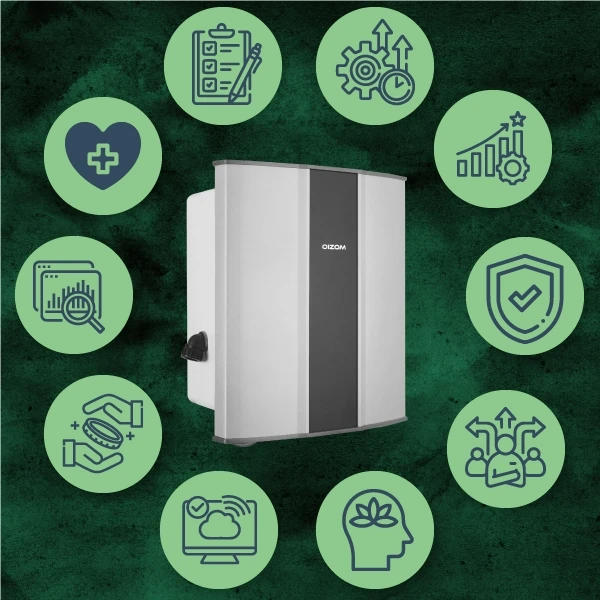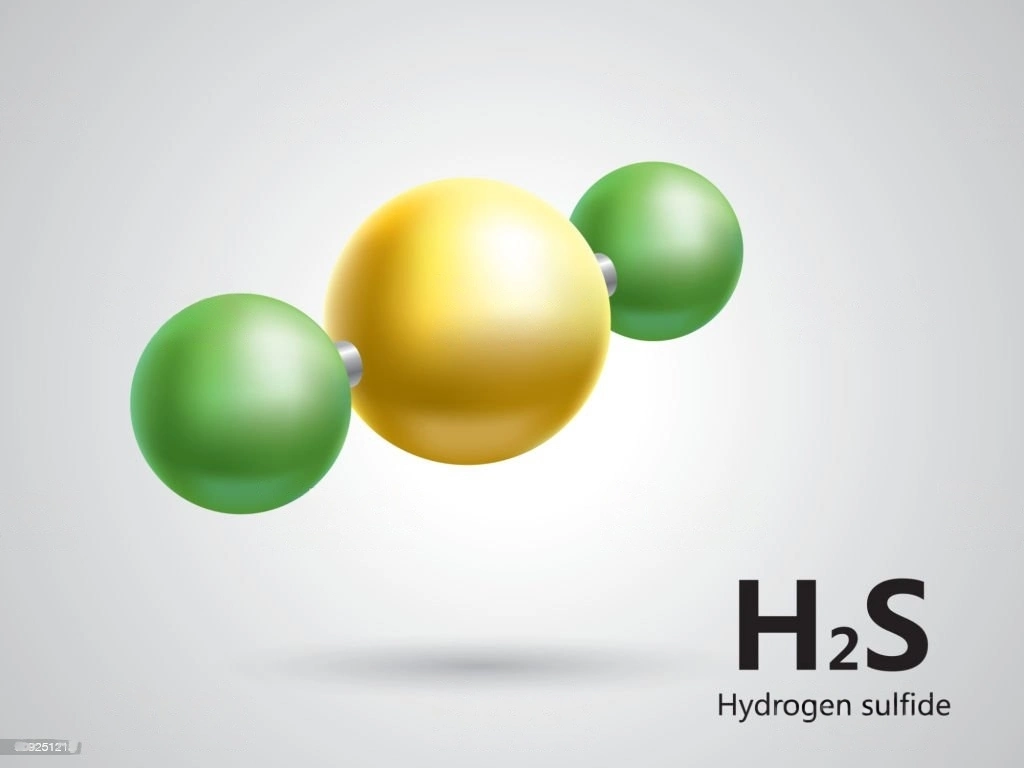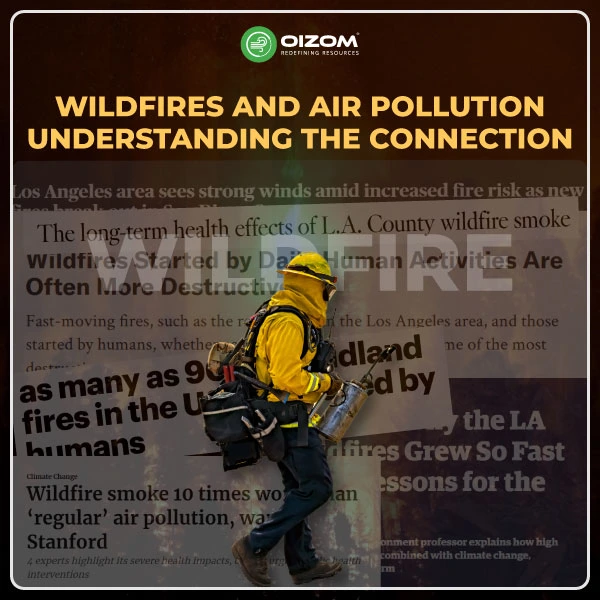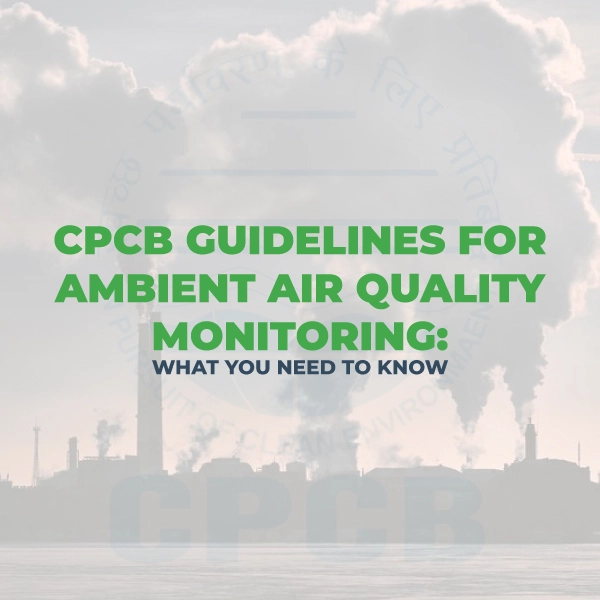Top 10 Benefits Of Using A Dust Monitoring System
The need for action becomes increasingly urgent as the air quality continues to deteriorate, particularly in urban areas, largely due to industrial emissions and urban mobility. As employers, it is our duty to ensure the safety of our employees. This responsibility extends to dust monitoring, as certain particles can pose a significant risk to their health. It’s not just a choice but a crucial obligation we must fulfill.
Let’s get a bit of information regarding dust. Dust is everywhere in business, from the constant need of construction sites to the vibrating machines of manufacturing plants and even in the seemingly peaceful office surroundings where paper and machines coexist. These particles, ranging in size from microscopic to visible to the naked eye, are formed by various processes. Dust Monitoring System Working is essential to manage and mitigate the impact of these particles in various environments, ensuring safety and efficiency. Stacking components, carving wood, and molding plastic all contribute to the particulate air that defines our professional environments. This article will provide insights into the top 10 advantages of dust monitoring systems. Let’s get started.
1) Improved Health
- Regular dust monitoring is more than a standard procedure; it is a proactive approach to ensuring worker safety and health. Dust in industrial zones can pose significant health and safety risks to employees.
- Manufacturing plants, processing facilities, and industrial locations all have the potential to produce hazardous dust. Toxic dust that collects or is dispersed in the air can harm employees’ health. Toxic dust can cause respiratory difficulties, and hazardous materials can lead to fires and explosions.
- Dustroids can monitor various types of dust with real-time data, reducing the probability of health risks by maintaining a moderate environment or as needed. Facilities can positively impact human health by eliminating unwanted particulate matter with the application of this advanced technology.
2) Regulatory Compliance
- Many firms find it challenging to navigate the complex framework of environmental rules. As anyone who runs a business will tell you, following safety regulations and procedures is not just a moral obligation but also critical to company success.
- Organizations such as the National Fire Prevention Association (NFPA) and the government-run Occupational Health and Safety Administration (OSHA) set standards and guidelines for equipment manufacturers to ensure maximum workplace safety from dust exposures.
- Dust monitoring systems ensure that your operations remain within legal limits, avoiding potential fines and issues related to air quality standards.
3) Increased Productivity
- Excessive dust can reduce sight, hinder machine functioning, and create hazardous working conditions. A proper dust monitoring system such as dustroid gives real-time accurate data, which is helpful for preparing control strategies and improves visibility and functionality, resulting in higher production and less downtime.
- Employees can focus better by reducing dust-related distractions and health risks, boosting productivity. Employees have fewer health-related absences and interruptions, which allows them to focus more on their work.
4) Improved Efficiency
- Installing cutting-edge sensors in strategic positions throughout a facility helps detect the presence of particulate matter or pollutants in the air.
- The sensors work automatically and deliver notifications to smart devices all at once. Facility managers can use the information gathered to analyze the issue, monitor the air quality, and take appropriate action.
- With an IoT-based air quality monitoring system, they won’t miss anything, and the surroundings will always be fresh.
5) Enhanced Safety
- We monitor dust levels to keep the air quality and the environment safe and healthy. Monitoring enables us to determine the composition of particulate matter in the air, identify sources, execute control measures, and evaluate their efficacy.
- The logged data can also provide information about the effect of wind speed and process temperature on dust levels. Dustroid is the answer for businesses that require pinpoint dust monitoring. From construction sites and mines to ports, we have covered the air quality from the tiniest PM1 particles to the largest PM100.
6) Better Decision-Making
- Dustroid keeps you updated whether you’re on-site or on the go. So, even if you’re on vacation at the beach, you can check the Oizom IoT Terminal Envizome on your phone or laptop to see the air quality at the site.
- This real-time dashboard includes smart alerts that trigger automated dust mitigation solutions such as misting systems when needed. It’s not only about real-time; our in-device memory keeps data safe even during network outages.
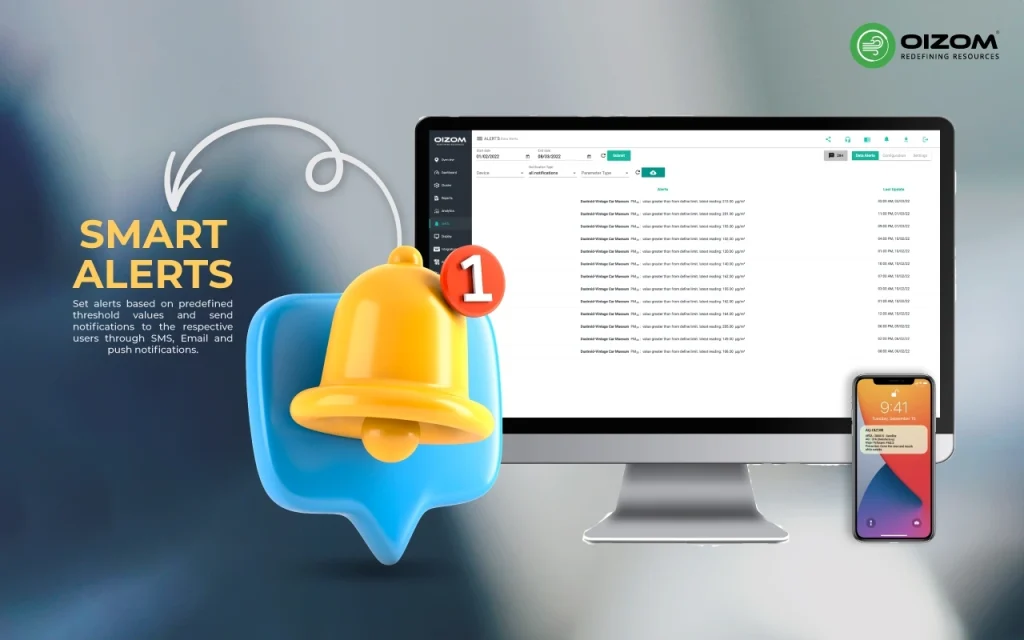
7) Peace of Mind
- Knowing that dust levels are continuously monitored and under control can be helpful for both employers and employees. It ensures the safety and security of the workplace. Moreover, it will increase employees’ productivity and efficiency and reduce office absenteeism.
8) Remote Monitoring
- Demand for remote dust monitoring is increasing daily. Monitoring dust levels remotely provides constant vigilance without needing physical presence, ensuring ongoing protection and the capacity to respond quickly to any issues.
- The quality of life is dependent on the quality of the air. Remote monitoring IoT technologies improve air quality, cut costs, expand coverage, and provide occupants with more flexibility. It leads to better environmental conditions in which humanity can live.
9) Cost-Savings
- Dust monitoring systems are crucial to use and guarantee efficient production and workplace safety by monitoring various particulate matter. Without a properly functioning system, production may slow or stop entirely, costing the company thousands of dollars daily.
- Moreover, optimizing the operational efficiency of dust monitoring systems can lead to significant cost savings over time.
10) Data Analysis
- Real-time data analysis can improve health and safety by identifying increases in dust levels and enabling timely interventions, particularly in industrial settings.
- Additionally, data trends can identify consistently high-level areas, allowing for targeted mitigation strategies.
Conclusion
Finally, The dust monitoring system is a must today! After all, it enables facilities to provide cleaner environments free of dust and other dangerous substances. The Internet of Things (IoT) is key to achieving this goal. It includes powerful sensor technologies for accurately monitoring a facility’s air quality. Installing them at construction sites and mines to port allows authorities to ensure the best air quality, energy savings, and better working conditions for workers. Therefore, improving environmental conditions within a facility just becomes simple, quick, and hassle-free with the application of this smart technology.

